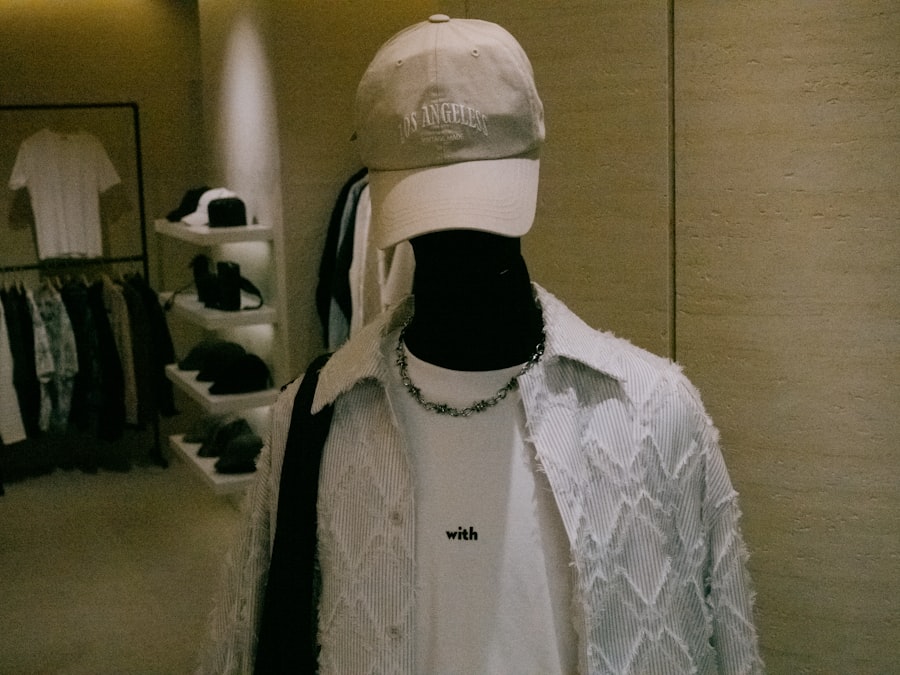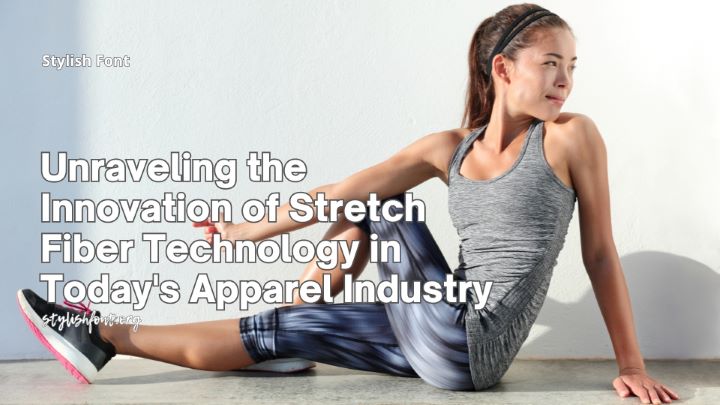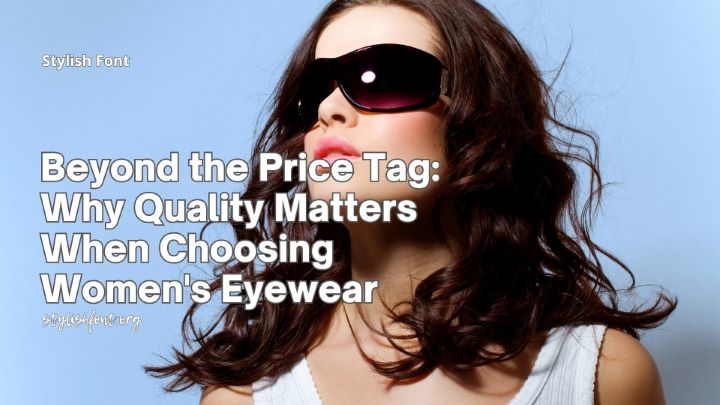The concept of phygital fashion, a blend of physical and digital experiences, has emerged as a significant trend in the fashion industry. This evolution can be traced back to the early days of e-commerce, where brands began to establish an online presence to reach a broader audience. Initially, the digital realm was seen as a separate entity from the physical world, with consumers engaging in online shopping without any tangible interaction with the products.
However, as technology advanced, the lines between these two realms began to blur, leading to the birth of phygital fashion. As consumers became more tech-savvy, their expectations evolved. They sought experiences that combined the tactile nature of physical shopping with the convenience and innovation of digital platforms.
This shift prompted fashion brands to rethink their strategies, integrating digital elements into their physical stores and vice versa. The rise of social media and mobile applications further accelerated this transformation, allowing brands to create immersive experiences that engage consumers on multiple levels. The evolution of phygital fashion reflects a broader cultural shift towards a more interconnected and experiential approach to retail.
Key Takeaways
- Phygital fashion has evolved from physical to digital, integrating technology to create immersive experiences for consumers.
- Technology has significantly impacted the fashion industry, revolutionizing the way brands design, produce, and market their products.
- Augmented reality and virtual reality play a crucial role in enhancing the phygital fashion experience, allowing consumers to interact with products in a virtual environment.
- Fashion brands are embracing phygital experiences by incorporating digital elements into physical retail spaces and creating interactive online platforms.
- Seamless integration is essential in phygital fashion to ensure a cohesive and engaging experience for consumers across physical and digital touchpoints.
The Impact of Technology on the Fashion Industry
Technology has profoundly influenced the fashion industry, reshaping how brands design, produce, and market their products. The introduction of advanced manufacturing techniques, such as 3D printing and automated production lines, has streamlined the design process, enabling brands to bring their ideas to life more efficiently. This technological revolution has not only reduced production costs but has also allowed for greater customization and personalization, catering to the unique preferences of consumers.
Moreover, technology has transformed the way consumers interact with fashion brands. Social media platforms have become essential marketing tools, allowing brands to reach their target audiences directly and engage with them in real-time. Influencer marketing has emerged as a powerful strategy, where individuals with significant online followings promote products to their audiences, creating a sense of authenticity and relatability.
As technology continues to evolve, its impact on the fashion industry will only deepen, driving innovation and shaping consumer behavior in unprecedented ways.
The Role of Augmented Reality and Virtual Reality in Phygital Fashion

Augmented reality (AR) and virtual reality (VR) have become pivotal technologies in the realm of phygital fashion, offering consumers immersive experiences that bridge the gap between the physical and digital worlds. AR allows users to overlay digital information onto their real-world environment, enabling them to visualize how clothing items would look on them without physically trying them on. This technology has been embraced by various fashion brands, enhancing the shopping experience by providing a more interactive and engaging way for consumers to explore products.
On the other hand, VR takes this experience a step further by creating entirely virtual environments where consumers can explore fashion collections in a simulated space. Brands have begun to host virtual fashion shows and showrooms, allowing users from around the globe to attend events that were once limited to physical locations. This not only democratizes access to high-fashion events but also fosters a sense of community among consumers who share a passion for fashion.
As AR and VR technologies continue to advance, their role in phygital fashion will likely expand, offering even more innovative ways for consumers to engage with brands.
How Fashion Brands are Embracing Phygital Experiences
| Brand | Phygital Experience | Metrics |
|---|---|---|
| Louis Vuitton | Virtual fashion show | Increased online engagement by 30% |
| Burberry | Augmented reality in-store | 10% rise in foot traffic |
| Gucci | Interactive digital storefront | 50% boost in social media mentions |
Fashion brands are increasingly recognizing the importance of phygital experiences in attracting and retaining customers. Many have begun to integrate digital elements into their physical stores, creating interactive displays that encourage consumer engagement. For instance, some retailers have implemented smart mirrors that allow customers to virtually try on clothing or access additional product information with a simple gesture.
These innovations not only enhance the shopping experience but also create memorable moments that encourage brand loyalty. Additionally, brands are leveraging mobile applications to create seamless shopping experiences that connect online and offline interactions. Through these apps, consumers can receive personalized recommendations based on their preferences and purchase history, making it easier for them to discover new products.
Furthermore, many brands are utilizing geolocation technology to send targeted promotions or notifications when customers are near their physical stores, driving foot traffic and enhancing the overall shopping experience. By embracing phygital experiences, fashion brands are not only meeting consumer expectations but also setting themselves apart in an increasingly competitive market.
The Importance of Seamless Integration in Phygital Fashion
For phygital fashion to be truly effective, seamless integration between physical and digital experiences is essential. Consumers expect a cohesive journey that allows them to transition effortlessly between online and offline interactions without any friction. This requires brands to invest in technology that enables real-time inventory management, ensuring that what is available online is also accessible in-store.
By providing accurate information about product availability across channels, brands can enhance customer satisfaction and reduce frustration. Moreover, a unified branding strategy is crucial for creating a consistent identity across all platforms. This includes maintaining visual aesthetics, messaging, and customer service standards that resonate with consumers regardless of where they engage with the brand.
When consumers perceive a brand as cohesive and well-integrated, they are more likely to develop trust and loyalty. As phygital fashion continues to evolve, brands must prioritize seamless integration to create an exceptional consumer experience that meets the demands of today’s tech-savvy shoppers.
The Consumer Experience: Navigating the Phygital Fashion Landscape

Navigating the phygital fashion landscape presents both opportunities and challenges for consumers. On one hand, they benefit from enhanced shopping experiences that combine the best aspects of both physical and digital realms. The ability to virtually try on clothes or access exclusive online content while shopping in-store adds an exciting dimension to the retail experience.
Consumers can explore collections at their own pace while receiving personalized recommendations tailored to their preferences. However, this new landscape can also be overwhelming for some shoppers. With an abundance of options available online and in-store, consumers may struggle to make informed decisions amidst the noise of marketing messages and promotions.
Additionally, the rapid pace of technological advancements can create a learning curve for those who may not be as comfortable with digital tools. To navigate this evolving landscape successfully, consumers must remain adaptable and open-minded while embracing new technologies that enhance their shopping experiences.
Sustainability and Phygital Fashion: Balancing Digital Innovation with Environmental Responsibility
As phygital fashion continues to gain traction, sustainability has emerged as a critical consideration for both brands and consumers. The fashion industry is notorious for its environmental impact, from resource-intensive production processes to excessive waste generated by fast fashion practices. However, phygital fashion offers an opportunity to address these challenges through innovative solutions that prioritize sustainability.
Digital technologies can play a significant role in reducing waste by enabling brands to adopt more efficient production methods and minimize overstocking. For instance, 3D printing allows for on-demand manufacturing, reducing excess inventory while catering to individual consumer preferences. Additionally, virtual try-on technologies can decrease return rates by helping consumers make more informed purchasing decisions before committing to a buy.
By embracing these sustainable practices within the phygital framework, brands can align themselves with environmentally conscious consumers who prioritize ethical consumption.
The Future of Phygital Fashion: Trends and Predictions
The future of phygital fashion is poised for continued growth and innovation as technology advances and consumer preferences evolve. One notable trend is the increasing use of artificial intelligence (AI) in personalizing shopping experiences. AI algorithms can analyze consumer behavior and preferences to provide tailored recommendations that enhance engagement and drive sales.
As AI becomes more sophisticated, it will enable brands to create hyper-personalized experiences that resonate deeply with individual consumers. Another prediction for the future of phygital fashion is the rise of blockchain technology in ensuring transparency within supply chains. Consumers are becoming more aware of ethical sourcing practices and are demanding greater accountability from brands regarding their production processes.
By leveraging blockchain technology, brands can provide verifiable information about their materials and manufacturing practices, fostering trust among consumers who prioritize sustainability and ethical consumption.
Collaborations and Partnerships: Uniting Physical and Digital Creativity in Fashion
Collaborations between fashion brands and technology companies have become increasingly common as both sectors recognize the potential of uniting physical and digital creativity. These partnerships often result in innovative products that push the boundaries of traditional fashion design while enhancing consumer experiences. For example, collaborations between luxury fashion houses and tech startups have led to the development of smart clothing that integrates wearable technology seamlessly into stylish designs.
Moreover, partnerships between established brands and emerging designers can foster creativity by blending diverse perspectives from both physical and digital realms. These collaborations not only generate buzz within the industry but also attract new audiences who may be drawn to unique offerings that challenge conventional norms. As collaborations continue to flourish within phygital fashion, they will play a crucial role in shaping the future landscape of the industry.
Overcoming Challenges in Phygital Fashion: Balancing Creativity and Technology
While phygital fashion presents numerous opportunities for innovation, it also poses challenges that brands must navigate carefully. One significant challenge lies in balancing creativity with technology; as brands embrace digital tools and platforms, there is a risk of losing the artistic essence that defines fashion design. Striking this balance requires thoughtful consideration of how technology can enhance rather than overshadow creative expression.
Additionally, ensuring accessibility for all consumers is paramount in overcoming challenges within phygital fashion. As technology continues to evolve rapidly, some segments of the population may feel excluded due to lack of access or familiarity with digital tools. Brands must prioritize inclusivity by designing user-friendly interfaces and providing support for those who may struggle with new technologies.
By addressing these challenges head-on, brands can create a more equitable phygital landscape that benefits all consumers.
The Ethical Implications of Phygital Fashion: Exploring the Intersection of Physical and Digital Identities
The rise of phygital fashion raises important ethical considerations regarding identity in both physical and digital spaces. As consumers increasingly curate their online personas through social media platforms and virtual environments, questions arise about authenticity and representation within these digital identities. Brands must navigate these complexities carefully by promoting inclusivity while respecting diverse cultural backgrounds.
Furthermore, issues surrounding data privacy come into play as brands collect vast amounts of consumer information through digital interactions. Ensuring transparency about data usage while prioritizing consumer privacy is essential for building trust within this evolving landscape. As phygital fashion continues to develop, addressing these ethical implications will be crucial for fostering responsible practices that honor both physical and digital identities in an increasingly interconnected world.
In conclusion, phygital fashion represents a transformative shift within the industry that merges physical experiences with digital innovation. As technology continues to evolve alongside consumer expectations, brands must adapt by embracing new strategies that prioritize seamless integration while addressing sustainability concerns and ethical implications. By navigating these complexities thoughtfully, they can create engaging experiences that resonate deeply with consumers while shaping the future landscape of fashion.
FAQs
What is Phygital Fashion?
Phygital fashion refers to the blending of physical and digital elements in the fashion industry. It involves the integration of technology and digital experiences into the traditional brick-and-mortar retail environment.
How is Phygital Fashion Changing the Fashion Industry?
Phygital fashion is changing the fashion industry by creating new and innovative ways for brands to engage with consumers. It allows for a seamless integration of online and offline experiences, creating a more immersive and interactive shopping environment.
What are Some Examples of Phygital Fashion Experiences?
Examples of phygital fashion experiences include virtual fitting rooms, augmented reality (AR) try-on experiences, interactive in-store displays, and digital fashion shows. These experiences blend the physical and digital worlds to enhance the overall shopping experience for consumers.
How is Technology Used in Phygital Fashion?
Technology is used in phygital fashion in various ways, such as virtual reality (VR), augmented reality (AR), interactive displays, smart mirrors, and mobile apps. These technologies enhance the shopping experience by providing personalized and immersive interactions with fashion products.
What are the Benefits of Phygital Fashion for Consumers?
The benefits of phygital fashion for consumers include a more personalized and interactive shopping experience, the ability to try on and visualize products in a virtual environment, and access to additional digital content and information about fashion products.
How are Fashion Brands Embracing Phygital Fashion?
Fashion brands are embracing phygital fashion by integrating technology into their retail spaces, creating virtual and augmented reality experiences, and leveraging digital platforms to engage with consumers. This allows brands to stay relevant and innovative in a rapidly evolving industry.





